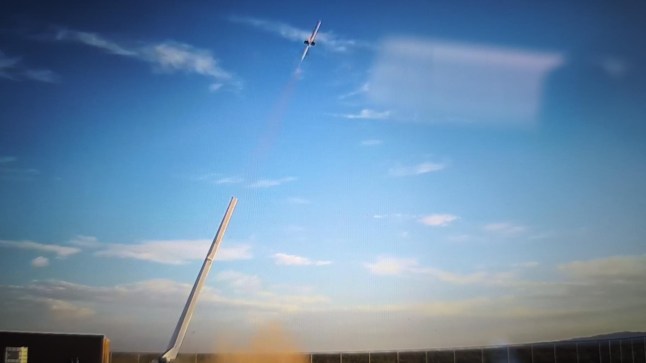05-15
The Making of Panda: From Domestication to Wildlization
 2021-10-05
2021-10-05
The VR documentary “Panda Go Home” shows Pandas are learning to live in the wild.
As reported by VICE on October 4th 2021, an innovative virtual reality documentary recorded the story of the rewilding of giant pandas in China.

It is reported that “Panda Go Home” (Panda) as a documentary filmed with VR technology, was jointly produced by Real Image Media, Intercontinental Communication Center and Hubei Federation of Literary and Art Circles. Panda is a documentary interacts with your senses. This film discusses the sustainability relationship between human and nature through the wildlization of panda.
The exploration of virtual reality has begun in the 50’s of last century. Sensorama, the first 3-dimensional virtual reality (VR) device, was invented by Morton Heilig, a Hollywood photographer who was pursuing the reconstruction of the relationship between human and audiovisual images/videos. Sensorama at that time allows you to emerge into the surrounding environment, and feel the sound, vibration, breeze and smell of what is around you. In his article “Cinema of the Future”, Heilig predicates that “the cinema of the future will become the first art form to reveal the new scientific world to man in the full sensual vividness and dynamic vitality of his consciousness.”
The VR technology is still developing and filming of “Panda” has been fraught with uncertainties and challenges. The filming crew of the “Panda” had to overcome the technical difficulties faced by its predecessors and had to conduct research and development (eg liaising with Canon to fix the issue of filming in low temperature environment for a prolonged period of time) in the process of filming. The successful overcoming of the difficulties in filming Panda sets an example in the VR industry and among its peers.
Interacting with human senses, the multi-level expression of spatial narrative allows the audience to better experience the storyline of Panda. VR allows the viewers to experience the documentary through their senses. Comparing with conventional films, VR has the natural advantage of portraying the reality of the subjects being filmed. More importantly, “Panda” goes deeper in prompting viewers to think about the many challenges faced by panda’s rewilding training.
Since the “wildlization” of pandas are taking places in different parts of China the use of spatial narrative approach is more suitable for the filming of Panda. In simple terms, adopting spatial narrative in filming a documentary allows the viewers to emerge into the space of the subject being filmed. For Panda, this means the space of the viewers can interact directly with the space of pandas. This “disintermediation” process, according to the director of panda Qin Leiyu, is “exciting”. Indeed, imagine in the future where you can experience another space just like Wade Owen Watts in Stephen Spielberg’s “Ready Player One”, “exciting” as a word may not be enough to describe the excitement. This enlightens the VR industry by providing new approaches to filming VR films, which helps populate the technology.
According to Qin Leiyu, the number of pandas has increased due to artificial breeding, and the classification of the level of threat against pandas has been lowered from ‘being endangered’ to ‘being vulnerable’. According to existing studies, in the future, climate warming may destroy 35% of the panda’s natural habitat in 80 years. Although China has lowered its classification of threat level against pandas, it has not lowered the panda’s protection level. China is currently trying to help pandas go back to the wild and survive with as little human intervention as possible. Such a process – the wildlization of pandas – has been affected by many factors such as economic development, market perception and the views of the general public. Therefore, documenting this process by way of film is pertinent.
In 2017, the filming crew of Panda accompanied the official representative from seventeen countries, the United Nations Development Agency and Chengdu Research Base of Giant Panda Breeding, to Chengdu, the hometown of pandas, and studied the lives of pandas. In Wolong National Nature Reserve, Shennongjia (a well-known ecological reserve in Hubei Province, China) and other places in China where pandas live in, the filming crew learned that these pandas were actually capable of leaving their comfortable breeding sites.
Rewilding is not simply about releasing pandas into the wild and there are certain minimum standards that have to be met. At the very least, panda needs to survive, mate and reproduce in the wild. Pandas undergo different phases of survival training in different areas.
The filming crew captured some interest footages. In the first stage of rewilding, the mother panda lives with her cub in the training area covering 2,400 square meters. This area simulates a wildlife environment, in which human only intervenes when the safety and health of the pandas are at stake. In the second stage bamboo and water resources are naturally distributed on a 300,000 square meters of land. The purpose of the second stage is to train the panda cubs to adapt to the natural living environment and learn the skills of survival. The third stage releases pandas into the wild. It has been known that most pandas are still in their first two stages of training.
The filming of Panda is unique in that it must follow the traditional approaches to filming a documentary and at the same time adding the elements of VR. The filming crew has to consider specific issues such as where to place the cameras and other equipment so as to not affecting panda’s natural daily routine. There was also the safety issue. Pandas can become hostile towards humans so it was important to have measures in place to ensure the safety of the filming crew. The filming crew conducted many field investigations in Sichuan, Hubei and other regions, and went through the hard work such as collecting information and materials, improving and refitting VR filming equipment.
Another challenge faced by the production team is how to tell the story of both pandas and snub-nosed monkeys in parallel. The snub-nosed monkeys share similar habits as the pandas and they, as a species, has been largely wildlized, which sets a successful example to the wildlization of pandas.
There are also many uncertainties when filming animals as they are unpredictable and uncontrollable. In addition to these typical challenges, it was also challenging to film during the Covid-19 pandemic.
Real Image Media has been focusing on the subject of nature and society for many years. Qiu Jiaqiu, the Panda’s Designer, commented that the filming of Panda is not just about recording what has happened. Another purpose is to address deeper issues such as the wildlisation of endangered species and how other countries tackle with similar issues. This will attract more attention from the general public and thus saving our ecosystem.




